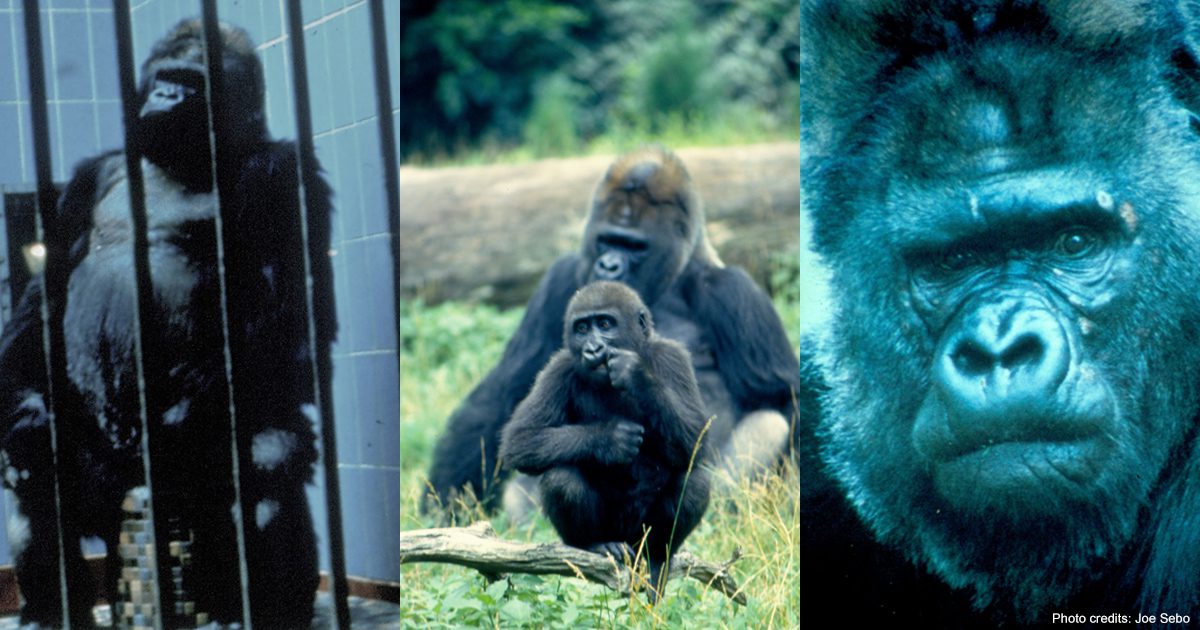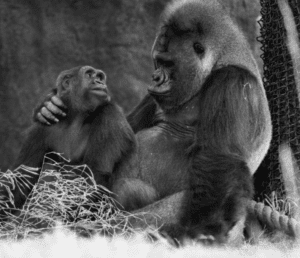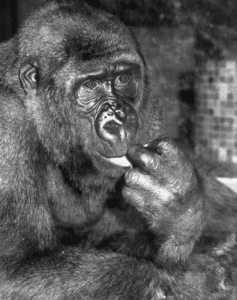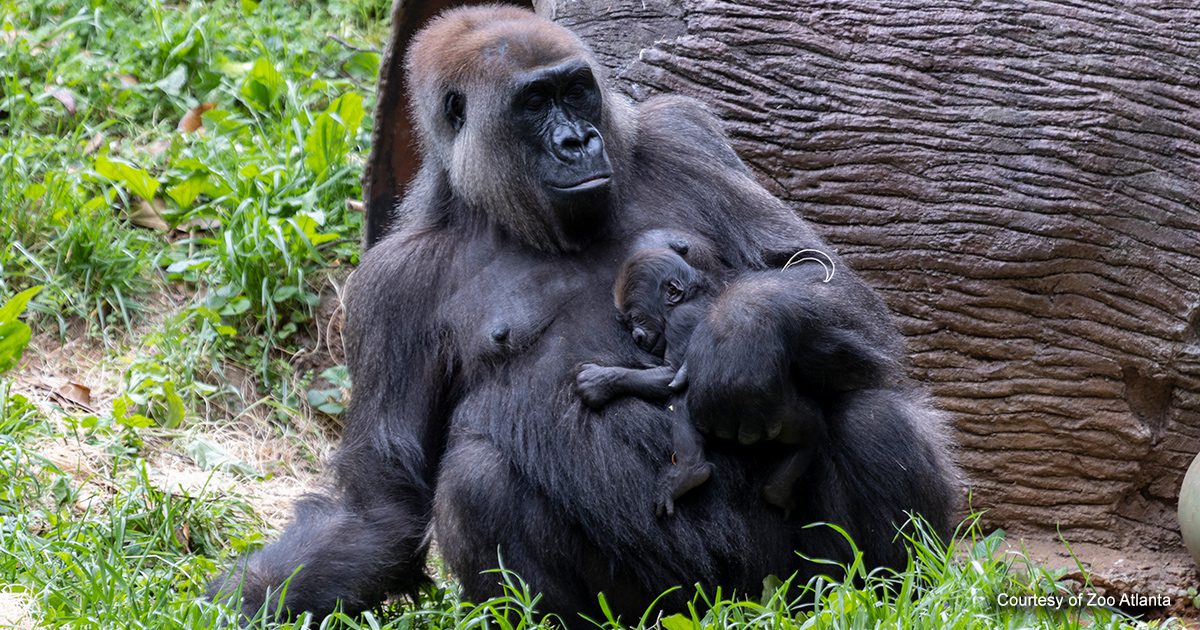
May 17, 2023 Life of Willie B. – Public Policy & Psychological Well-being – Part 3
The incredible story of Willie B was influenced by the aspirations of Mayor William Barry Hartsfield, who served twenty-four years as Mayor of Atlanta, and the leadership of Atlanta Mayor Andrew Young, who had the courage and the vision to reimagine Atlanta’s zoological park when it had become a pariah among its peers.
[See Willie B. Part 1 and Willie B. Part 2]
Hartsfield’s advisors mistakenly believed that a star attraction at the zoo would improve its reputation. Other cities had star male gorillas in their collections, Bushman in Chicago, Massa in Philadelphia, and Phil in St. Louis. Ringling Brothers exhibited a famous gorilla named Gargantua. Sadly, these magnificent creatures were all captured violently in the wild at great loss to their family groups, and who knows what psychological damage was inflicted by these disruptions. The pursuit, capture, and commerce of gorillas were perpetrated by hunters offering living specimens to zoos and other exhibitors worldwide. City Hall was so thrilled by the acquisition of Willie B. that they named him after Mayor Hartsfield. He was housed in a hard, concrete cage and separated from his kind. Despite the housing conditions, he was much loved by zoo visitors.
When he arrived in Atlanta in 1961, there were few other apes in southern zoos. He drew visitors from throughout the South. In time, enlightened zoo supporters and visitors understood his capture was nothing to celebrate, and a movement to upgrade the housing for Willie B. and his other kingdom members was launched.

Gorilla Willie B. with his first mate, Kinyani, at Zoo Atlanta, Atlanta, Georgia, September 8, 1989. Copyright Atlanta Journal-Constitution. Courtesy of Georgia State University Library.
The great silverback’s life is a tale of two mayors separated by decades of dramatic social change. Andrew Young, the second African American Mayor of Atlanta, responded to the zoo’s condition by setting up a task force to study alternatives to municipal management. His team created a unique public/private partnership to fund and operate the zoo. The city recreation authority issued bonds, and the State of Georgia also provided generous funding. The corporate and philanthropic community was the source of additional funds needed to bring the zoo and Willie B.’s enclosure to a standard of excellence achieved by the nation’s elite zoos. One could conclude that ego drove the acquisition and naming of Willie B., while community pride drove the zoo’s revitalization. Mayor Young hired me to lead the zoo’s reform movement, a labor of love that took me and my staff eighteen years to complete. Willie B.’s new home, the Ford African Rain Forest Exhibit, was Immediately acclaimed as one of the finest gorilla exhibits in the world. After nearly five decades, it is still highly regarded.
My book Atlanta’s Iconic Ape is the story of Zoo Atlanta and its most famous resident. The new Zoo Atlanta operating structure is a model for others, and many zoos in the Association of Zoos and Aquariums have privatized to free the institution’s entrepreneurial spirit. All of them have enjoyed greater success under privatization. Mayor Young called Zoo Atlanta the most successful privatization in the history of our state. But the actual role model was Willie B. himself. Despite decades of solitary confinement, he proved his resilience as a silverback who successfully socialized, reproduced, and behaved kindly to his offspring when provided with appropriate conditions. He was a leader who exemplified the term silverback. When Willie B. died in 2000, more than 5,000 people attended a celebration of his life at the zoo. Mayor Young presided and uttered these inspiring words, suggesting that Willie B’s liberation may have even greater meaning for humankind:

Willie B. Photo courtesy of Atlanta History Center
“We looked at him in his cage, and we knew that he didn’t belong there. He was brought here in captivity, but he found a way to appeal to our hearts so that we were moved to find ways to set him free. And in setting him free, perhaps we set ourselves free to help us learn that we can live together in peace with all of the animals that God has created. . . We don’t know what the animals think of us, but we sure know that we love them . . .love can be multiplied and can bear fruits that are not unimagined by any of us at present. But when we do see wonderful things happening between men and women and animals, let’s remember this giant lovable gorilla who was almost human. Thank God for Willie B.”
Mayor Young’s eulogy and tributes by many of Atlanta’s most prominent citizens appear in Atlanta’s Iconic Ape, available at Amazon.com. As we learned, it takes a village to raise a great ape. Willie B.’s peers and heirs now thrive at Zoo Atlanta thanks to the community’s commitment to a zoological garden with ethical standards second to none.
Update: The first offspring of Willie B. Jr, son of Willie B., was born at Zoo Atlanta on April 25, 2023. The infant and his mother Shalia are doing well. On May 9, Zoo Atlanta announced the infant is a male and is named Willie B. III.



